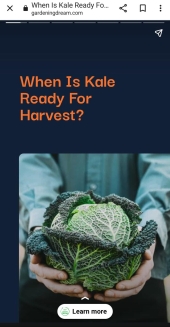
 4
4






Mandrake...takes on and holds the influence
of the devil more than other herbs because of its similarity
to a human. Whence, also, a person’s desires, whether good
or evil, are stirred up through it...
-Hildegard of Bingen, Physica
 1
1




 1
1




Mandrake...takes on and holds the influence
of the devil more than other herbs because of its similarity
to a human. Whence, also, a person’s desires, whether good
or evil, are stirred up through it...
-Hildegard of Bingen, Physica
 1
1








Mandrake...takes on and holds the influence
of the devil more than other herbs because of its similarity
to a human. Whence, also, a person’s desires, whether good
or evil, are stirred up through it...
-Hildegard of Bingen, Physica




Om is where the heart is.
 1
1




Om is where the heart is.
 1
1




Mandrake...takes on and holds the influence
of the devil more than other herbs because of its similarity
to a human. Whence, also, a person’s desires, whether good
or evil, are stirred up through it...
-Hildegard of Bingen, Physica




Mandrake...takes on and holds the influence
of the devil more than other herbs because of its similarity
to a human. Whence, also, a person’s desires, whether good
or evil, are stirred up through it...
-Hildegard of Bingen, Physica




Ryan M Miller wrote:
Thankfully, both field mustard and wild rape are still edible. In fact, I am growing field mustard in my garden this year along with black mustard (Brassica nigra) and wild radishes (raphanus raphanistrum). I should be able to post photographs of them later today.


Mandrake...takes on and holds the influence
of the devil more than other herbs because of its similarity
to a human. Whence, also, a person’s desires, whether good
or evil, are stirred up through it...
-Hildegard of Bingen, Physica
 1
1




Check out the Food Forest Card Game: https://permies.com/wiki/141665/Food-Forest-card-game-English
 3
3




 2
2




JayGee
 3
3




 2
2




Julia Dakin wrote:I've heard it called Sea Kale. It looks like what you're describing.
Check out the Food Forest Card Game: https://permies.com/wiki/141665/Food-Forest-card-game-English
 2
2





 3
3




Small-holding, coppice and grassland management on a 16-acre site.
 5
5




Small-holding, coppice and grassland management on a 16-acre site.
 3
3




Tristan Vitali wrote:Haven't seen any here in central Maine. Way too harsh for them generally speaking, even in coastal areas (coastal areas get a bit less snow pack which leaves them more exposed to the extreme cold and drying winds).
The napus and rapa species, on the other hand ... we often successfully overwinter russian kales and various turnips, even in our more harsh winters with little snow cover.
I'm in Bangor, and I have overwintered red russian kale with no special efforts. It now reseeds itself and takes over half my garden space if allowed. Last year was a seeding year and it got away from me, so I collected no seeds--but nature sure did!
 4
4




Erika Bailey wrote:
Tristan Vitali wrote:Haven't seen any here in central Maine. Way too harsh for them generally speaking, even in coastal areas (coastal areas get a bit less snow pack which leaves them more exposed to the extreme cold and drying winds).
The napus and rapa species, on the other hand ... we often successfully overwinter russian kales and various turnips, even in our more harsh winters with little snow cover.
I'm in Bangor, and I have overwintered red russian kale with no special efforts. It now reseeds itself and takes over half my garden space if allowed. Last year was a seeding year and it got away from me, so I collected no seeds--but nature sure did!

 5
5





|
Liar, liar, pants on fire! refreshing plug:
The new permaculture playing cards kickstarter is now live!
https://www.kickstarter.com/projects/paulwheaton/garden-cards
|



